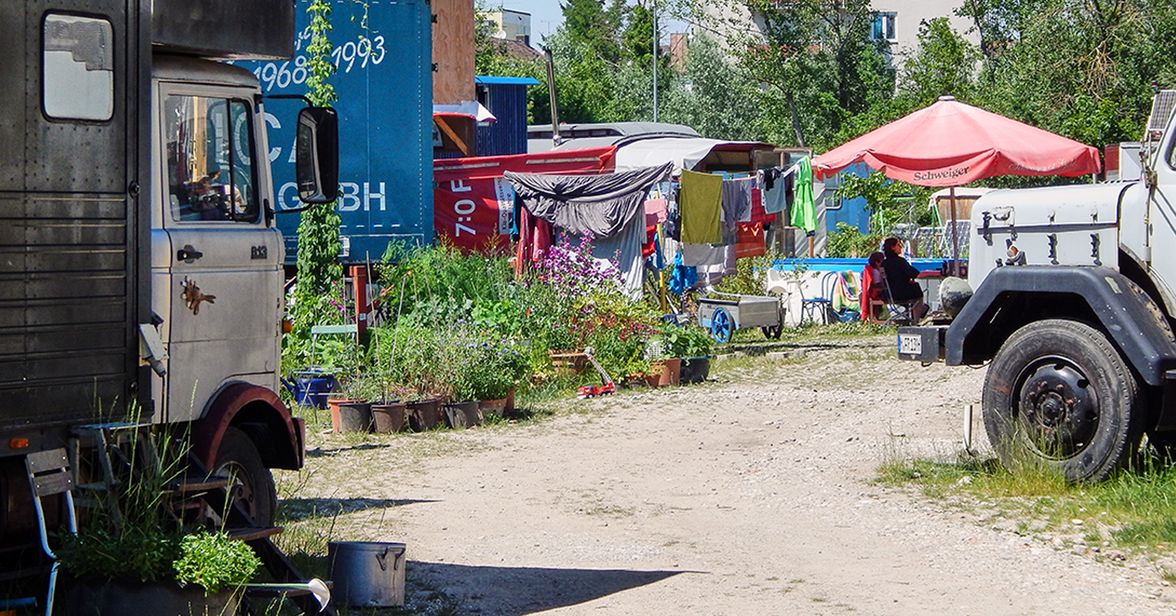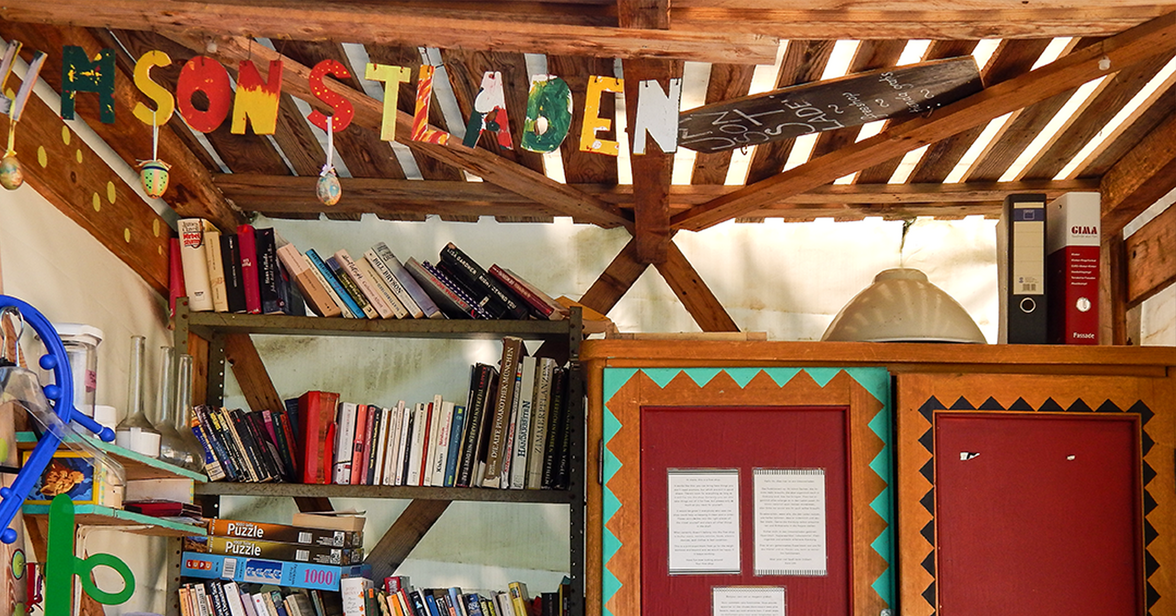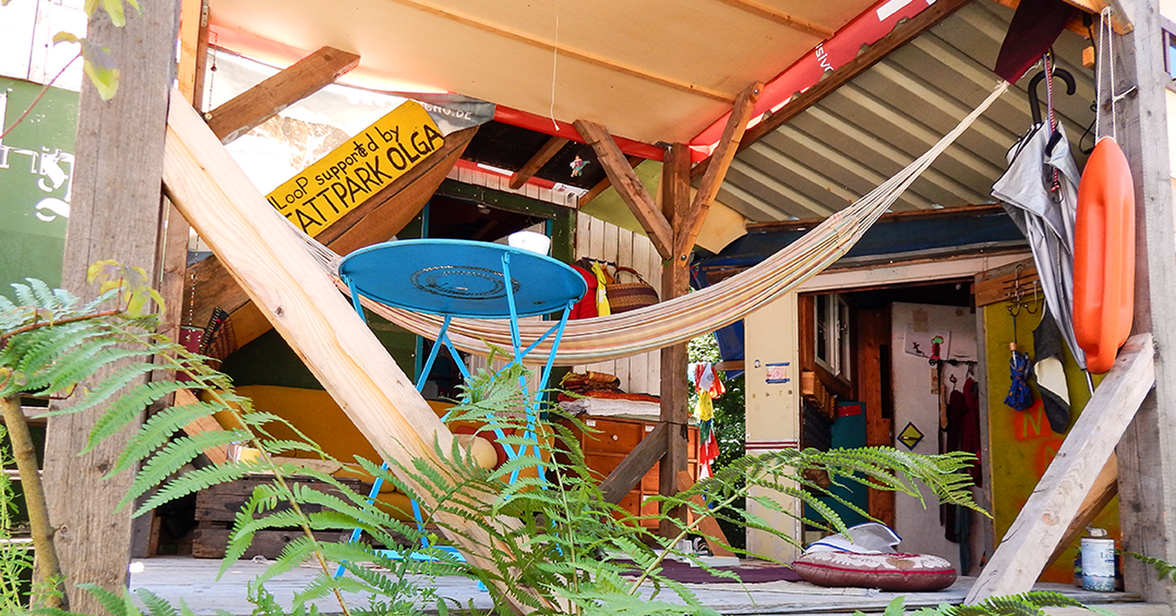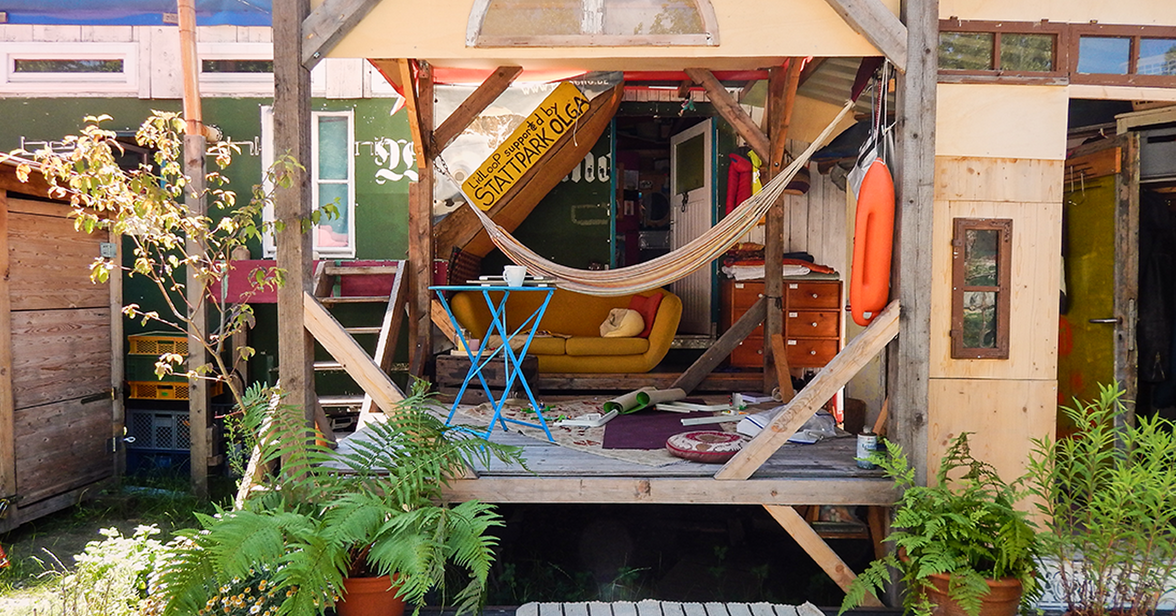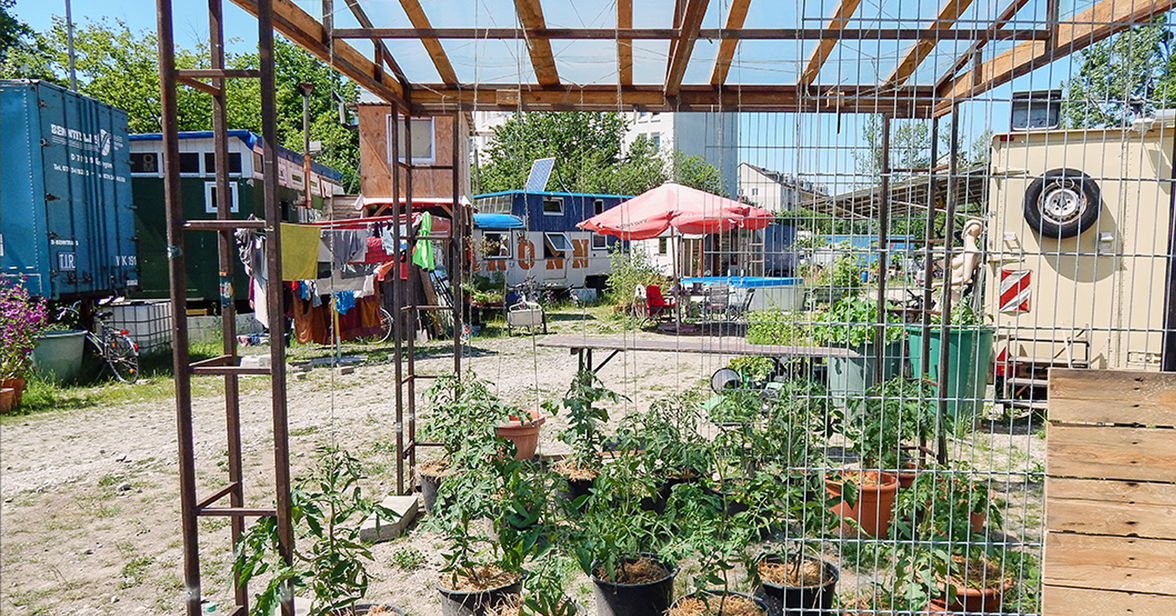Stattpark Olga
Stattpark Olga is a community living and cultural project that uses discarded and converted construction trailers and containers to occupy brownfield sites. In addition to the idea of sustainable living in the sense of self-sufficiency, the group focuses on organizing cultural programs, to which it regularly invites the population.
Type
Type of intervention: Installation / Action
project character: temporary use / event / appropriation
Theme: sustainable city / social city / active city
Project objective: Activation / stabilization / discourse / playfulness
Location
Project location: Munich; Sendling; Heckenstaller-, corner Passauerstraße (since 2018)
Project dimension: 2,000 - 3,000m2
Time
Project period: since 2011 (founding year of the community living and culture project)
Project duration: since 8 years (continuous)
Project frequency: permanent with changing locations
Project timeline: ongoing
Space
Type of open space: fallow land with woody structures
Ownership: public land
Accessibility: not restricted
Actors
Clients: none
Creators: Stattpark Olga // activist, organizer
Project partners: Municipal Department, City of Munich // Administration
Other actors: Artists
Funding
(Commissioned) budget: none
Subsidies: none
Own funds: donations / entrance fees / circular economy
Planning context ★★★☆☆
Thematic planning context:
In addition to its own housing project, the "Stattpark Olga" project aims to offer an uncommercial open space that functions as a social meeting place and educational venue for the population. In this context, the open space is also always an example of the revitalization and appropriation of unused spaces, as well as be the ideology of uncommercial self-sufficiency of the community housing project.
Spatial planning reference:
A spatial planning reference to the brownfield site in use can only be determined to a limited extent. However, it is relevant to illuminate the spatial effect of the project on the urban planning context. The Stattpark activates areas that would otherwise lie fallow and are usually not part of the public open space. These white spots on the "social atlas" of the city of Munich become not only inhabited spaces but also social centers in the sense of the community living and cultural project. If one wants to understand the change of movements in the district towards the wasteland as a new center instead of around it, as well as the effect of the project as a building and thus "gentrification brake" as spatial contexts, the project definitely has a spatial planning reference.
Research sources
Blogsport, Blog Stattpark Olga, 2019, Stattpark Olga. olga089.blogsport.de, 14.06.2019.
Grassl, M., 2018, mucbook - Dein München-Deine Blogger. www.mucbook.de/die-karawane-zieht-wieder-weiter-der-stattpark-olga-hat-endlich-eine-neue-heimat/, 14.06.2019
Authors
Christopher King, Fabian Konopka
Photographers
Fabian Konopka, TUM, 2019
Editorial revision
Johann-Christian Hannemann, Felix Lüdicke, Julia Treichel
Publication/Status
21.06.2019
